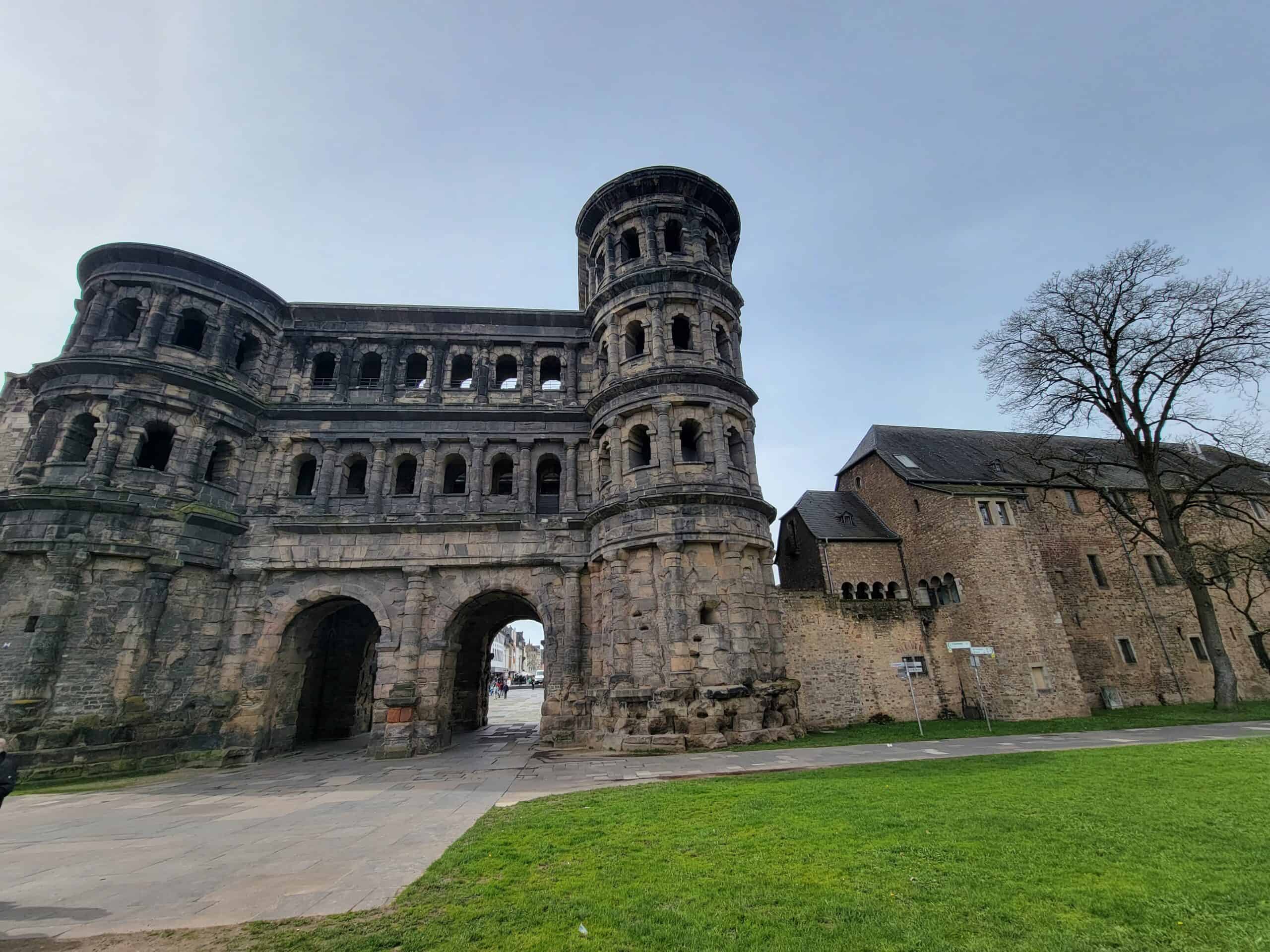The often-overlooked ancient city of Trier is a true hidden gem in Germany that you don’t find on most itineraries. Its abundance of ancient Roman sites, medieval buildings, great atmosphere, and stellar museums belongs on your bucket list! Here are the absolute best things to do in Trier!
Where is Trier?
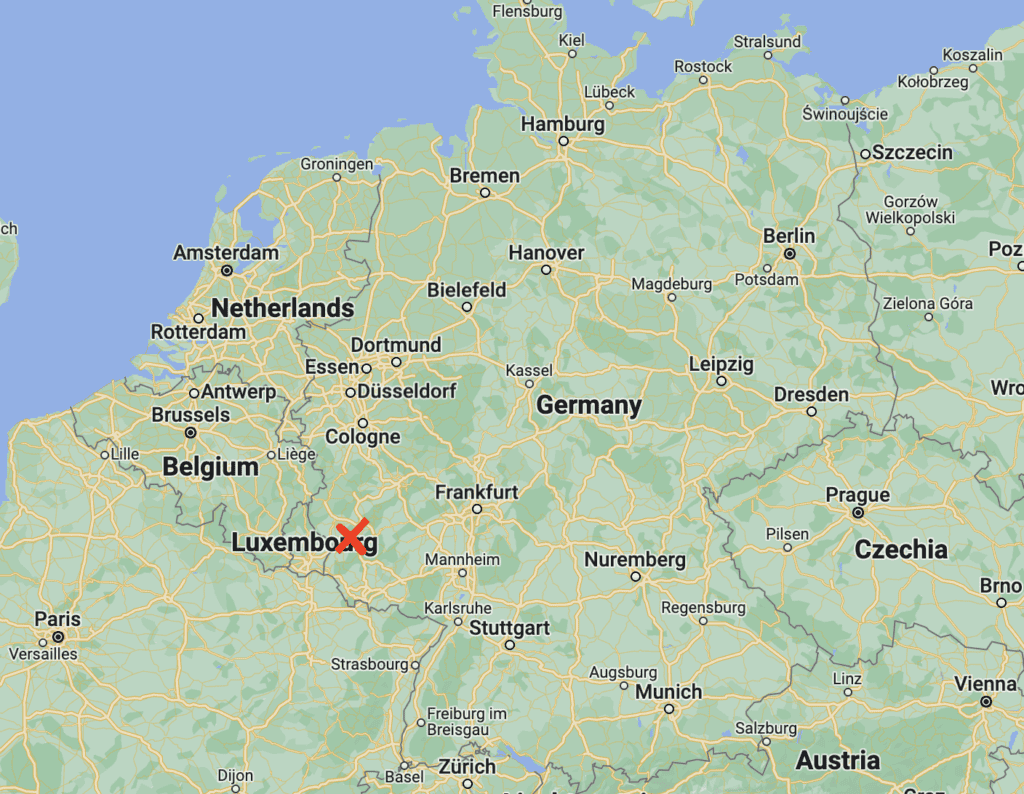
Looking at the map, you see right away why Trier is often, and unfortunately overlooked. It’s sort of tucked away, snuggled up next to Luxembourg – hours from the most popular German vacation hotspots. But, that’s ok. It just means there’s more room for YOU!
After we moved to Germany, I made sure our first big outing took us to Trier, the oldest Roman city north of the Alps. Begin at the beginning, right? And boy was I totally not disappointed!
Best Things to Do in Trier
*If you know you’ll be visiting multiple sites, check out the Trier Antiquities Card! It’s available in several price points, and will give you discounts on the ancient sites and museums.
1) The Black Gate
You want giant imposing Roman ruins? This is your place. The best-known landmark of the city, and impossible to miss, is the Porta Nigra (Black Gate). They think it got it’s name because of the dark color of the stone. Whatever the reason, it has a serious Game of Thrones vibes.
History
The Porta Nigra used to be attached to walls that surrounded the city to keep it safe from invaders. This was during the reign of Emperor Marcus Aurelius in the 2nd Century. At that time Trier was named ‘Augusta Treverorum’ meaning “august city of the empire,” and also giving a tip of the helmet to the Treveri, a Celtic tribe who inhabited the area before the Romans arrived.
No one is exactly sure what happened to the Treveri, but we can speculate that it probably didn’t go well for them. After conquest, survivors were likely assimilated into the new Roman town, where the cultures melded.
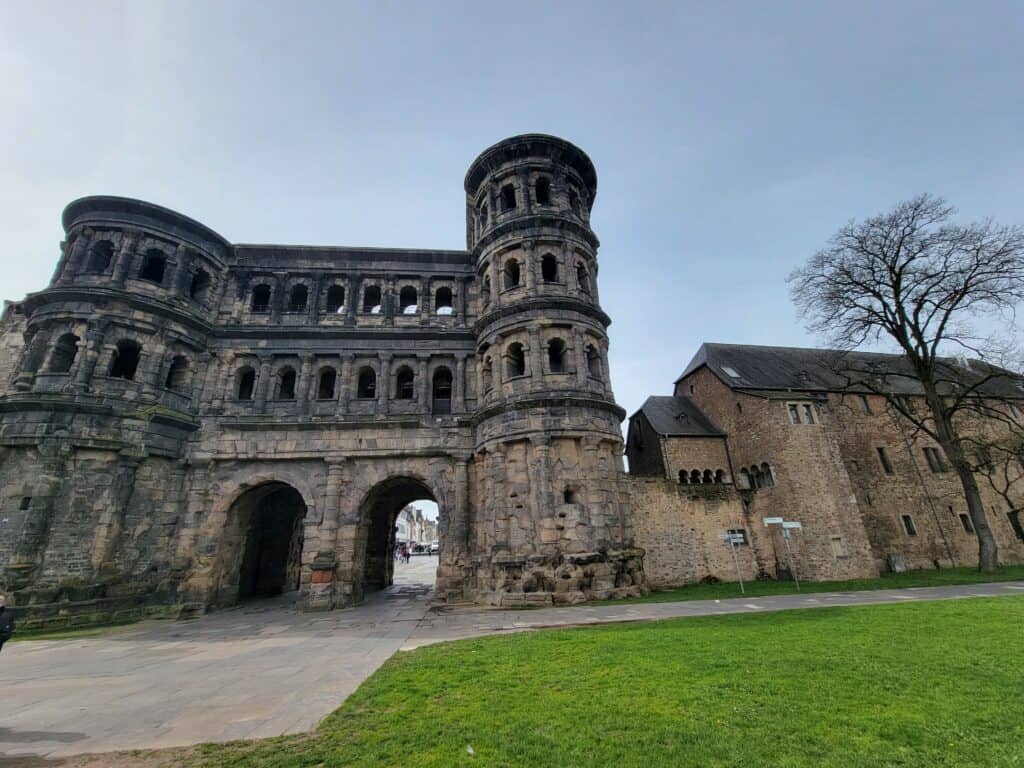
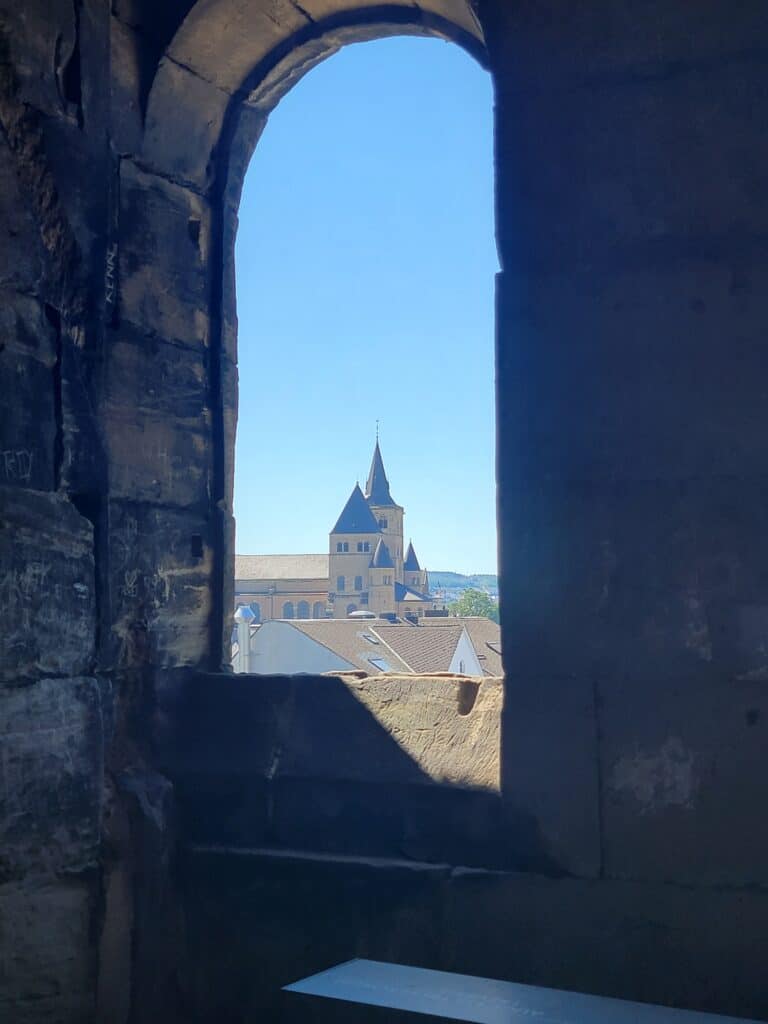
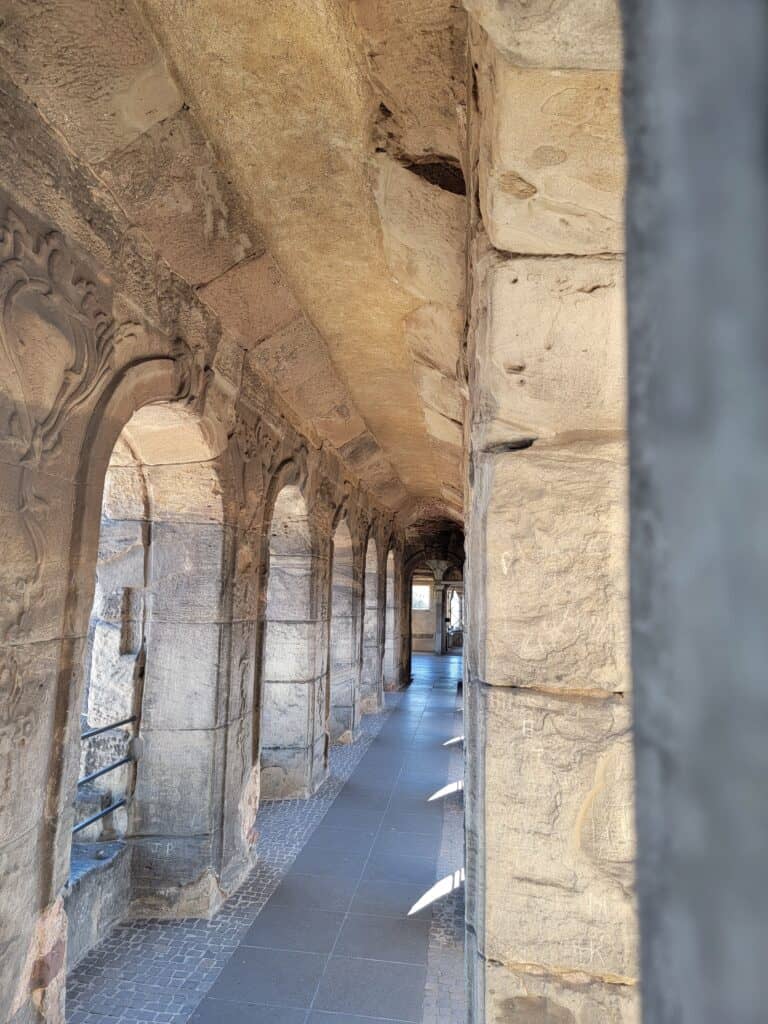
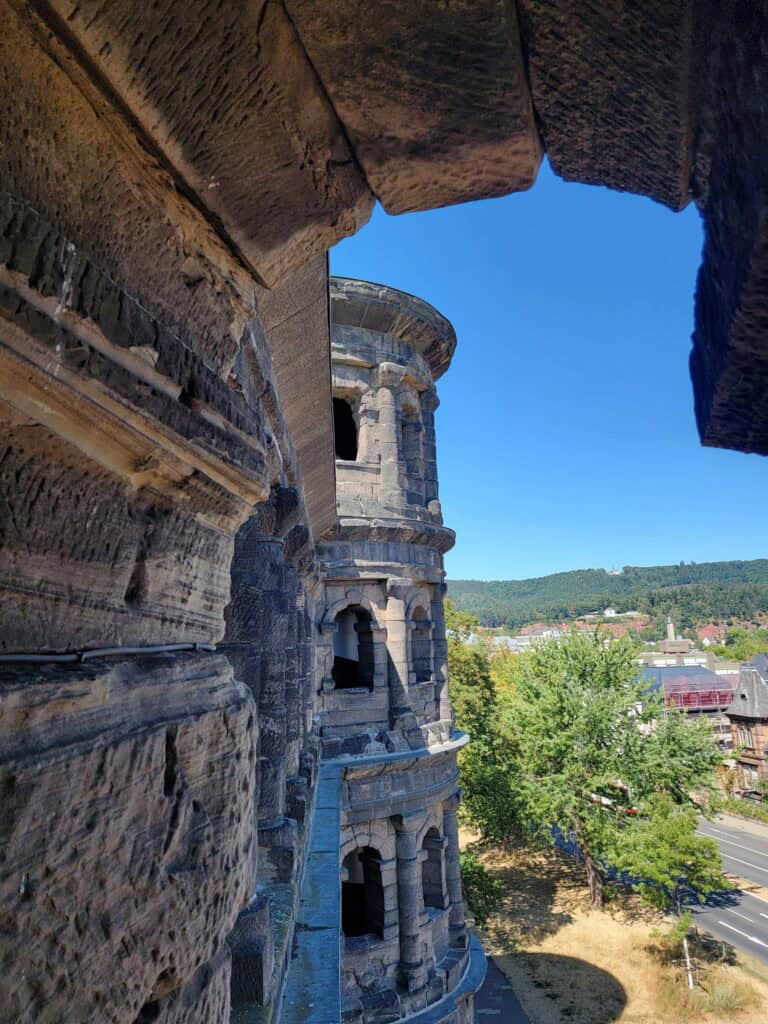
While in Trier, you’ll also hear a lot about a man named Simeon who lived in Syria in the 11th century and had a crazy vision that he should go to Trier and live inside the Porta Nigra as a hermit monk.
So off he went on an epic 1500 mile journey. When he arrived, he somehow convinced the local Bishop that he should be allowed to live in the top floor of the Black Gate. And now he’s Saint Simeon and you’ll see references to him everywhere – even on the manhole covers! That’s him with the key, symbolizing his role as “gatekeeper” to the divine realm.
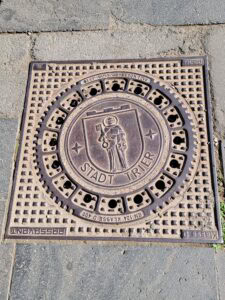
It’s hard to believe it used to be taller, but the top two stories were demolished in the Middle Ages, probably to recycle the stone to build other structures in the area.
Entrance
For a mere €4 you can purchase a ticket and enter the Black Gate, which is actually a whole building. It’s absolutely fascinating, and each level has amazing photo ops of sprawling quaint vistas, great selfie spots, and places to just sit and gaze. You can find Porta Nigra’s hours of operation and full current pricing at the official Porta Nigra site
2) Trier Cathedral of St. Peter (Trier Dom)
Do not miss the Trier Cathedral of Saint Peter (Trier Dom) and its neighbor, Church of Our Lady. And how can you? They are right near Porta Nigra in the center of the old town.
The first basilica was built on the site in the 4th century, but the neighboring Franks destroyed it. Then the Vikings got a hold of the replacement structure and destroyed it! Then, more rebuilding in the 1100s, additions in the 1300s, 1500s, and 1700s, and reconstruction after damage from bombing raids during World War II (which luckily spared most of the interior). Despite the patchwork history of this incredible building, the end result will take your breath away!
Take time to enjoy the quiet and look at the unbelievable ceilings, tombs, columns, floors, and statuary. The Baroque-era blue and white stucco work on the vault of the west choir is stunning.
There’s also a really cool treasury museum which was closed the first time I went. Check the hours before you go and squeeze it in if you can. Admission to the cathedral is free, but there is a small fee to see the treasury. Check for hours, treasury tickets, and also guided tours at the official Trier Cathedral website.
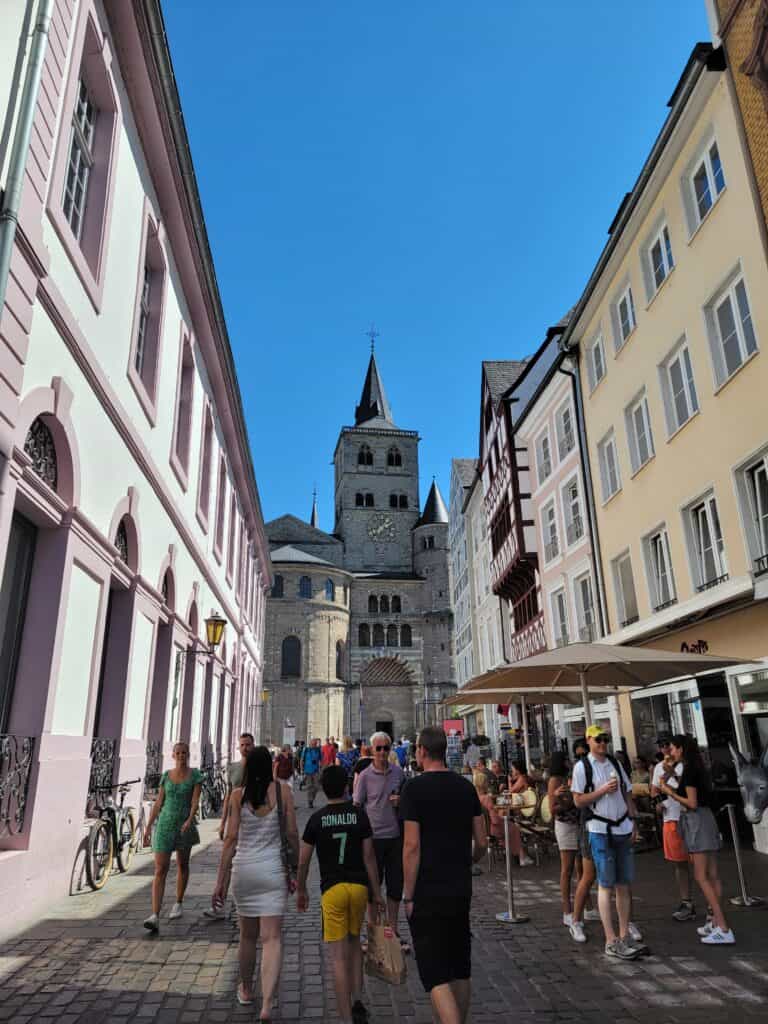
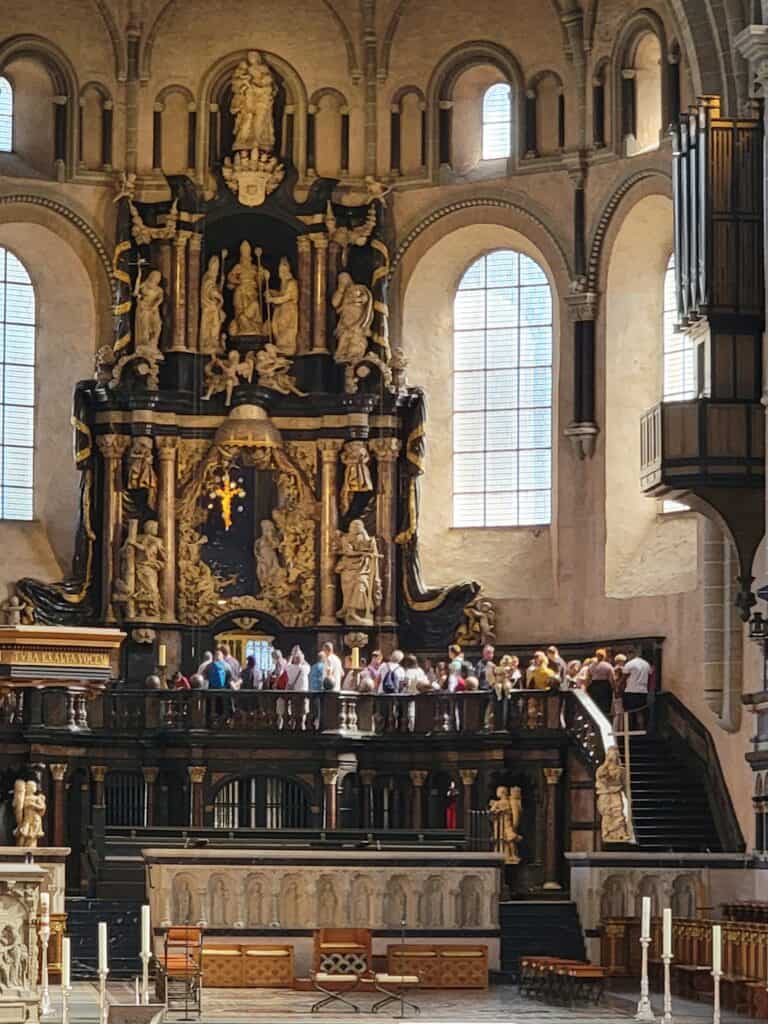
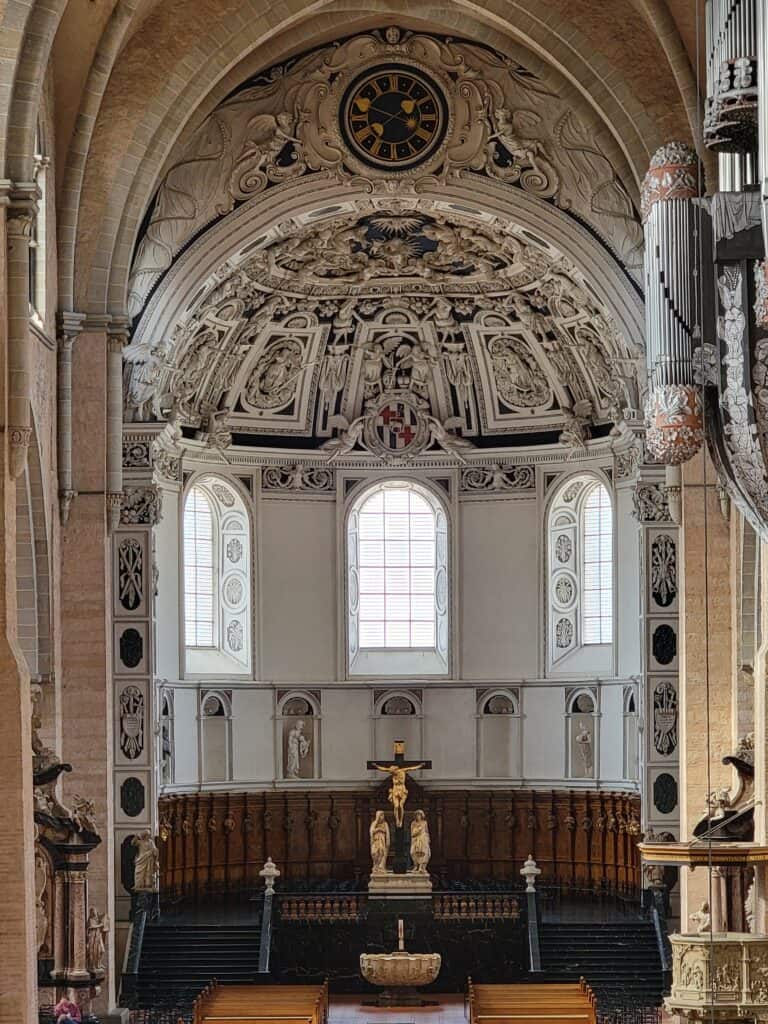
3) Church of Our Lady (Frauenkirche)
The Church of Our Lady is literally connected to Trier cathedral. The mood is different, and it’s a lot smaller, but don’t miss it on your way out! The painted ceilings and the red and blue glass in the post-war windows are magical. It is truly a lovely space.
Construction began in about 1230, and it is the oldest gothic church in Germany! During post-World War II repairs, construction workers found an original plan from the time of the church’s construction hidden in a staircase. The plan showed the altar in the center of the church and after careful repairs and restorations, the altar is now back in its intended place. The paint colors have also been restored to the original colors.
A plexiglass window in the floor lets you look into the ground below the church which shows all the archaeological layers dating back centuries.
Admission is free, and you can access the church from the cathedral, or from its main entrance.
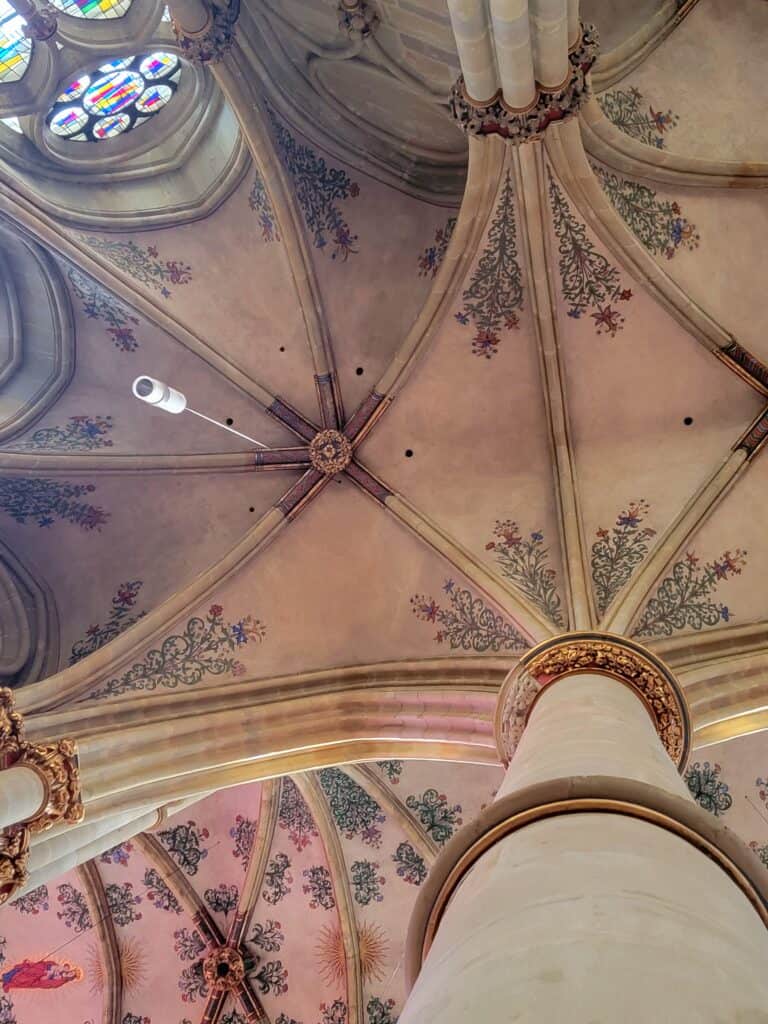
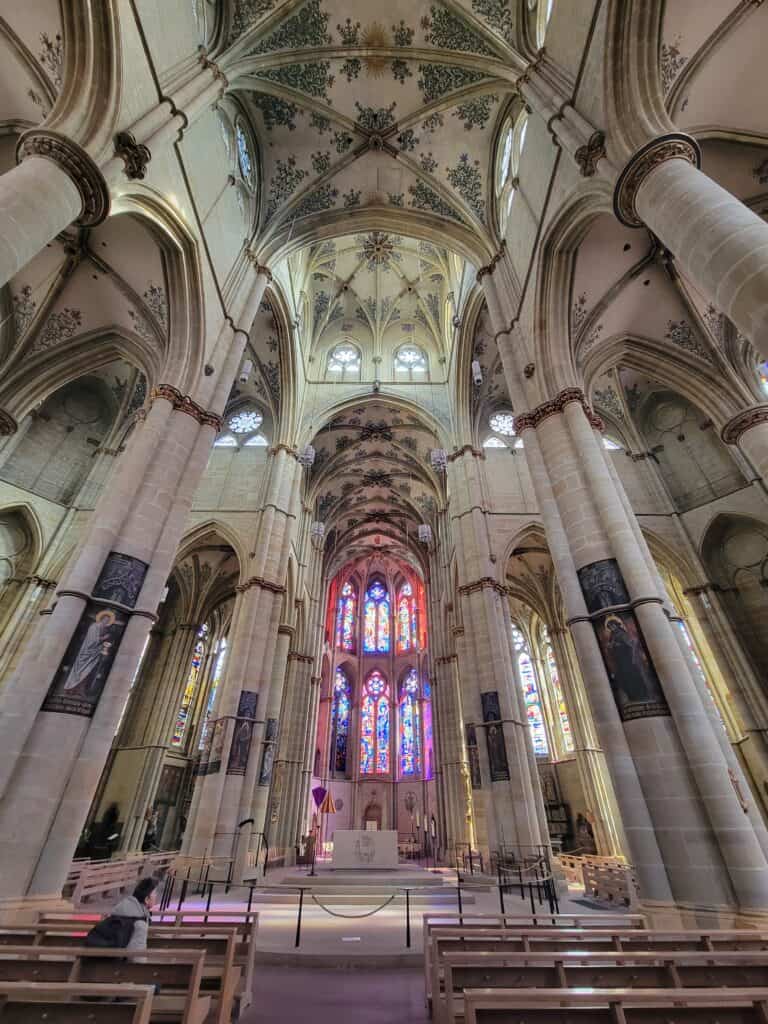
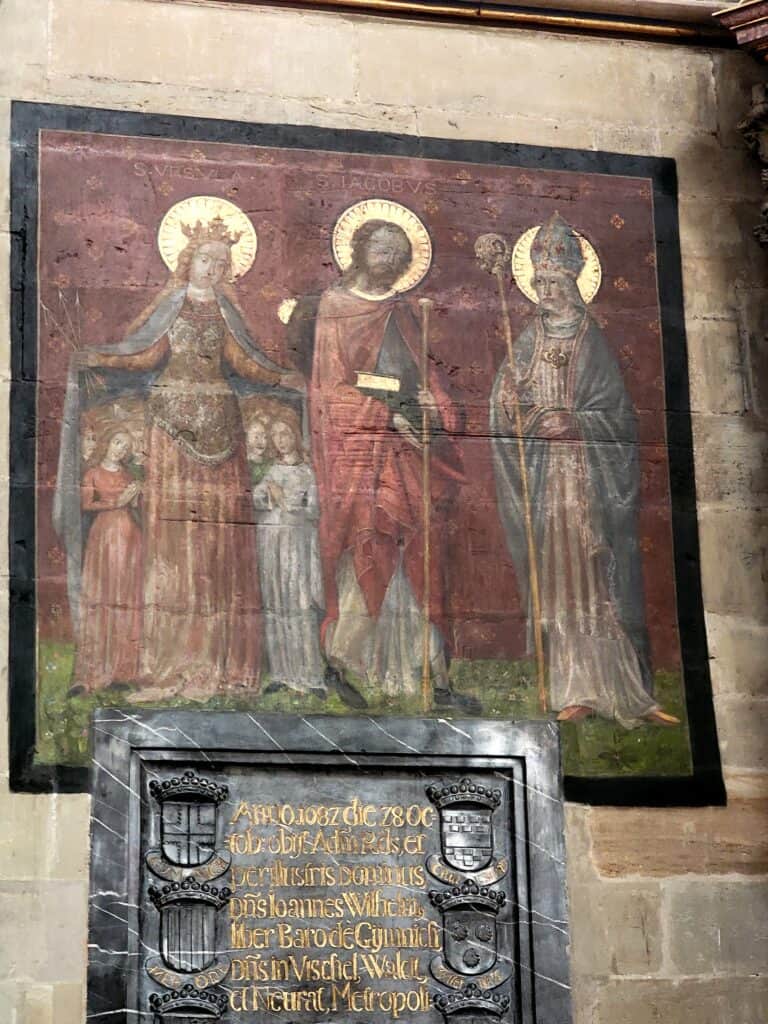
4) Stadtmuseum Simeonstift
Right next to the Porta Nigra is the City Museum of Trier, the Stadtmuseum Simeonstift which is worth a stop if you have time. It traces the city from its beginnings through the 20th century. The stand-outs for me were the statues in the entrance hall, and a surprising and very enormous collection of Asian ivory netsukes.
They also had some very beautiful historical clothing which was donated by a patron. And make sure you see the very moving display about the plight of the Jews of this region during World War II including documents and audio interviews with Holocaust survivors.
It’s kind of a cool and crazy hodge-podge of interesting things. Beware though, because you may need to wear sunglasses or some kind of retina protection in the “Yellow Hall.” I never yearned for beige so much in my life! The museum also has a regular schedule of special exhibits so be sure to check it out at the link above before you go.
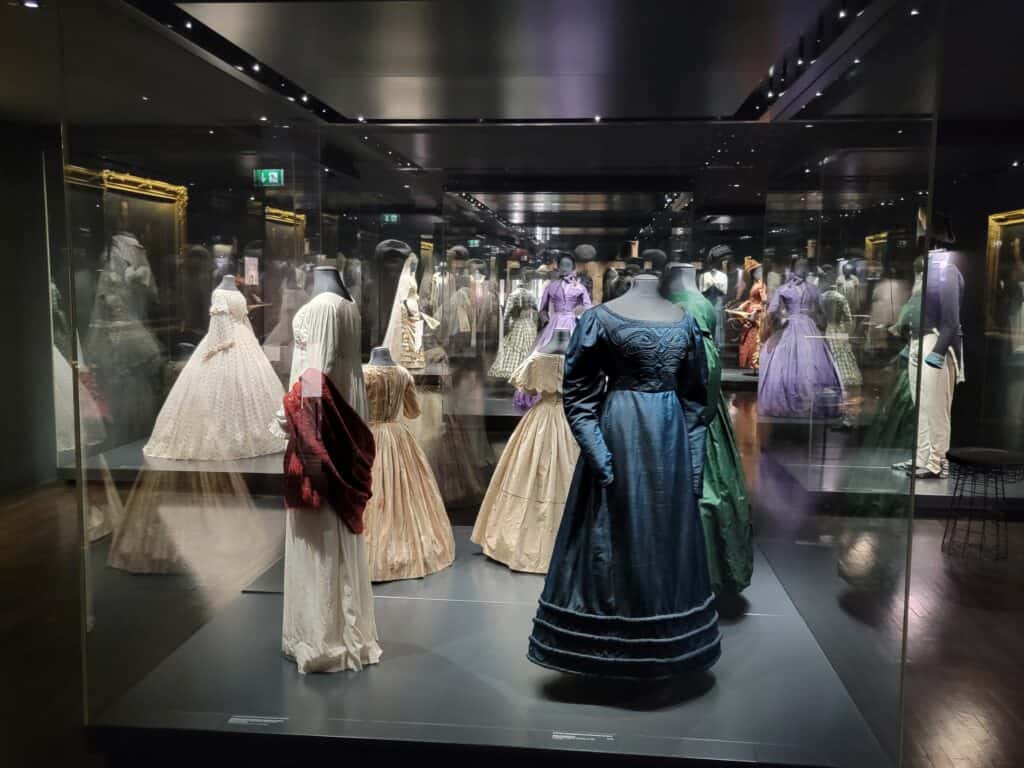
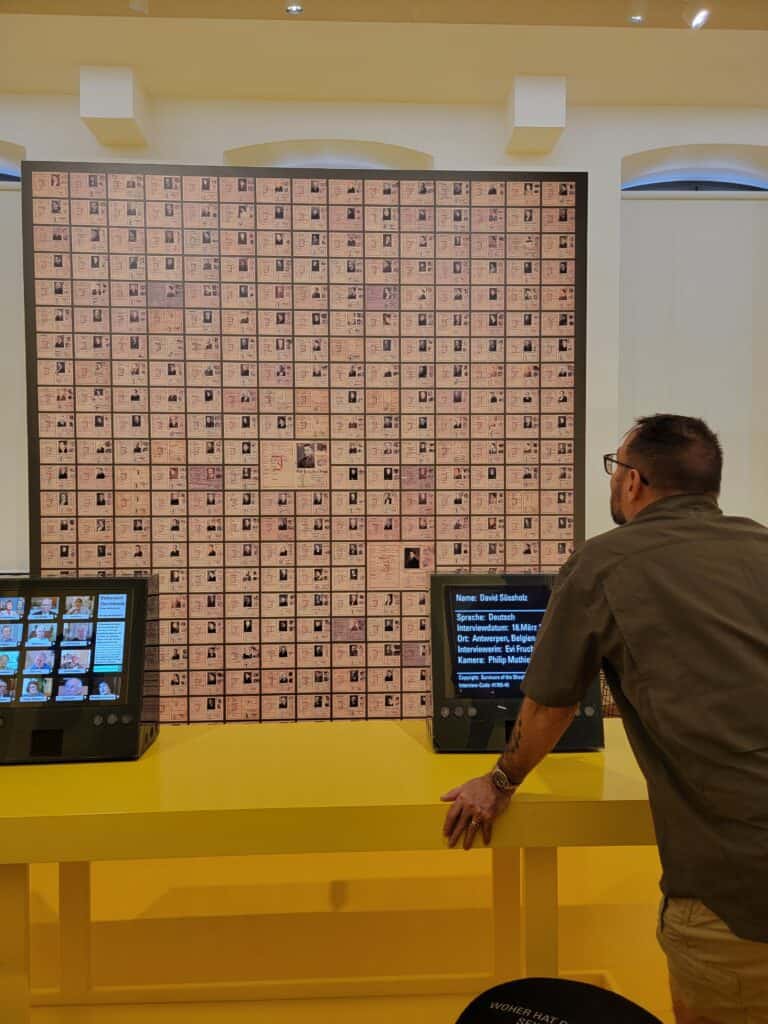
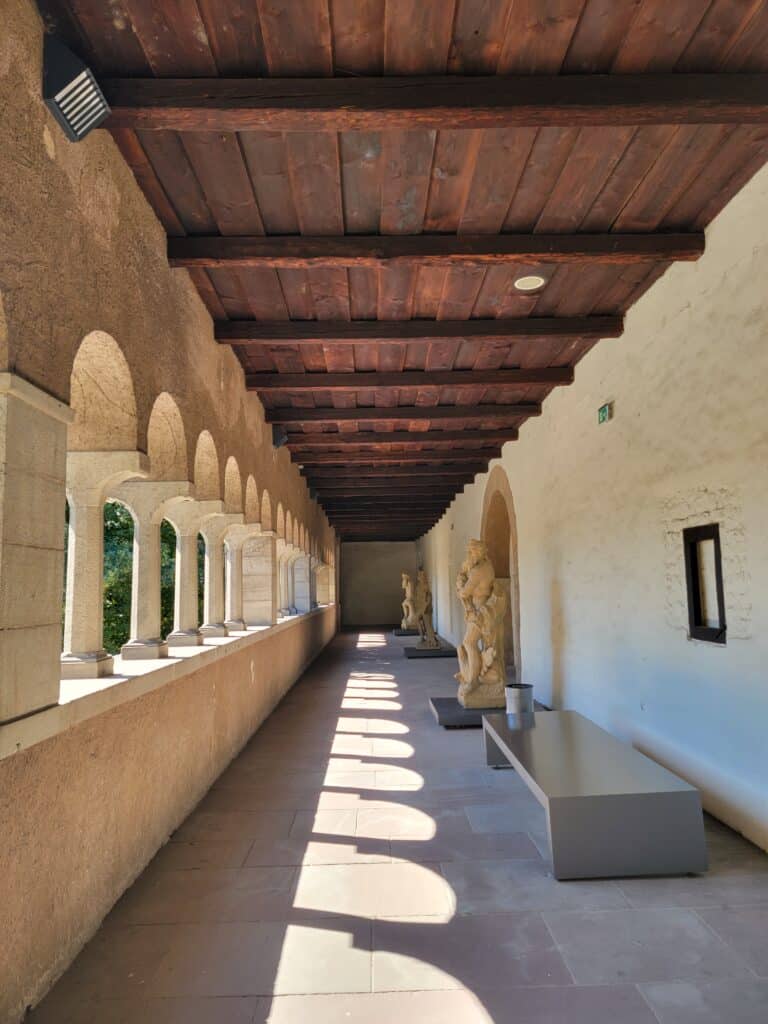
5) The Rheinisches Landesmuseum
“Just bring some time with you and let yourself drift.” That’s the suggestion from this absolute must-see museum in Trier – the Rheinisches Landesmuseum (Rhenish State Museum).
Hang on to your britches if you’re a museum nerd. Trier, being a major Roman city has, as you can imagine, an an overflowing treasure house full of all the archaeological wonders of the area. You can even see the famous Trier gold hoard of coins and jewelry that was discovered in the 1990s. It’s the largest Roman hoard ever found anywhere. It’s a hidden gem within a hidden gem!
There’s also a collection of mosaics to die for – the largest assemblage of Roman mosaics north of the Alps. They also boast an impressive collection of enormous ancient tombstones including the famous Neumanen wine ship, which marked the grave of a wealthy wine merchant.
It’s truly one of my favorite museums of all time. Filled with breathtaking art and artifacts, small enough to see it all in one visit, and just about the time your brain is on overload, you’re done. The first time I came to Trier I missed it. Do not make my mistake! Next time I’m back I’m going to do the whole thing all over again.
Here are some of my favorite things from the museum. I took like 300 pictures (no lie) but I’m not going to ruin it for you, so here are just a few! A trip to Trier is worth it, even if it’s just to see this incredible museum, which truly is one of the best things to do in Trier!
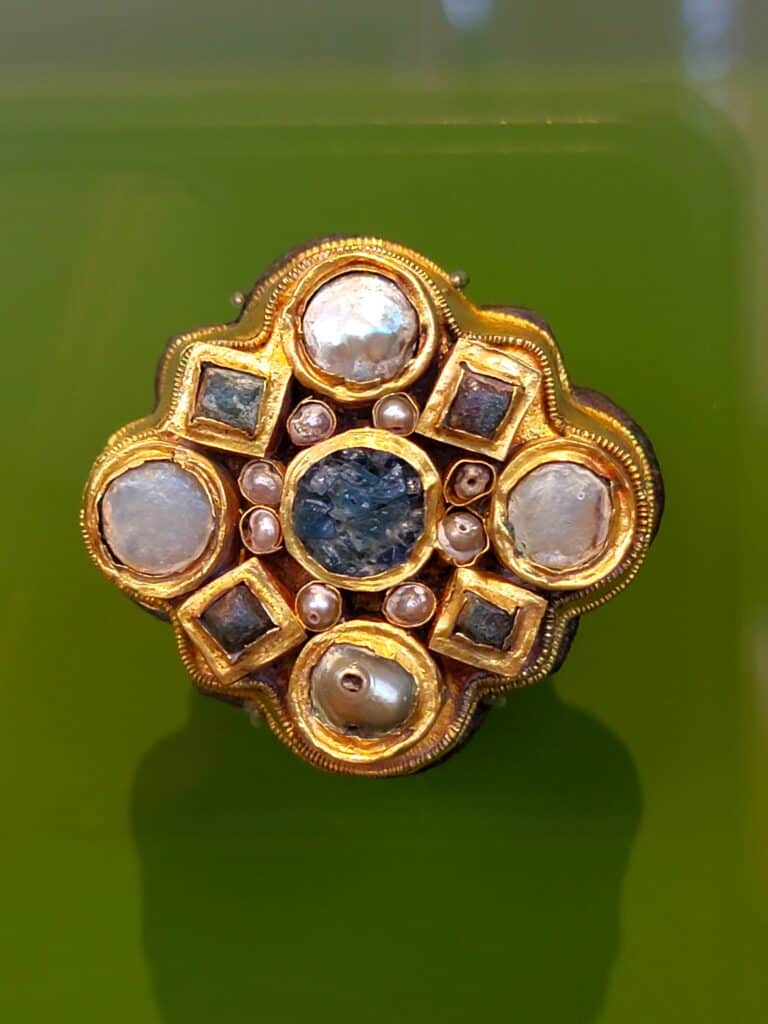
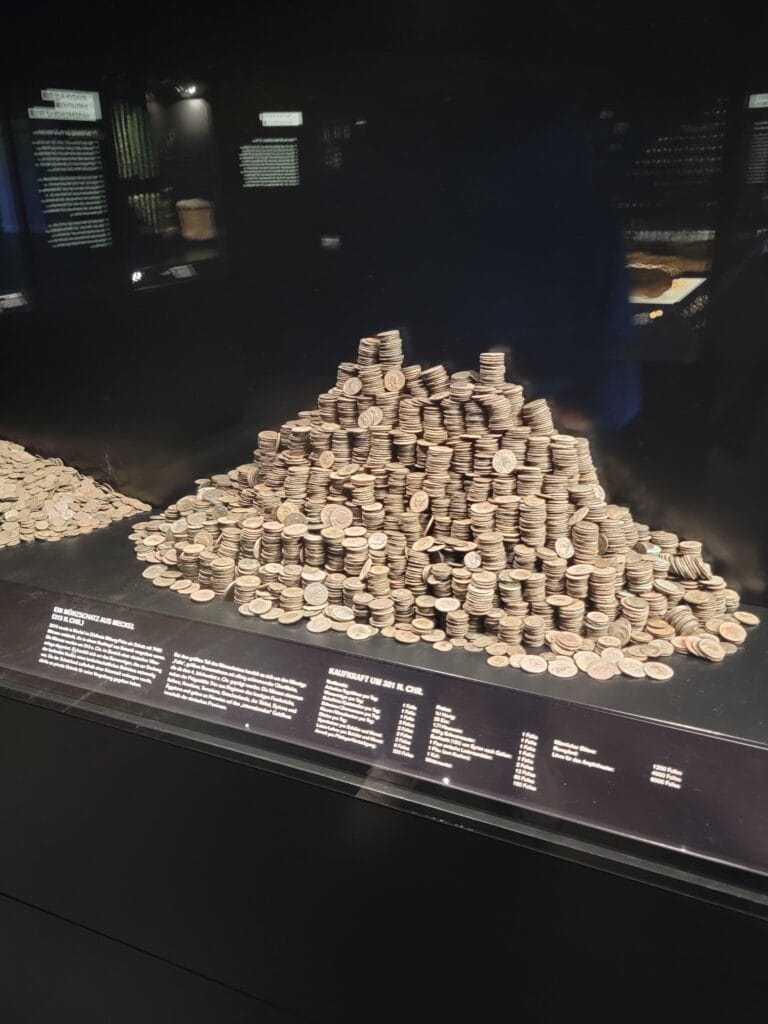
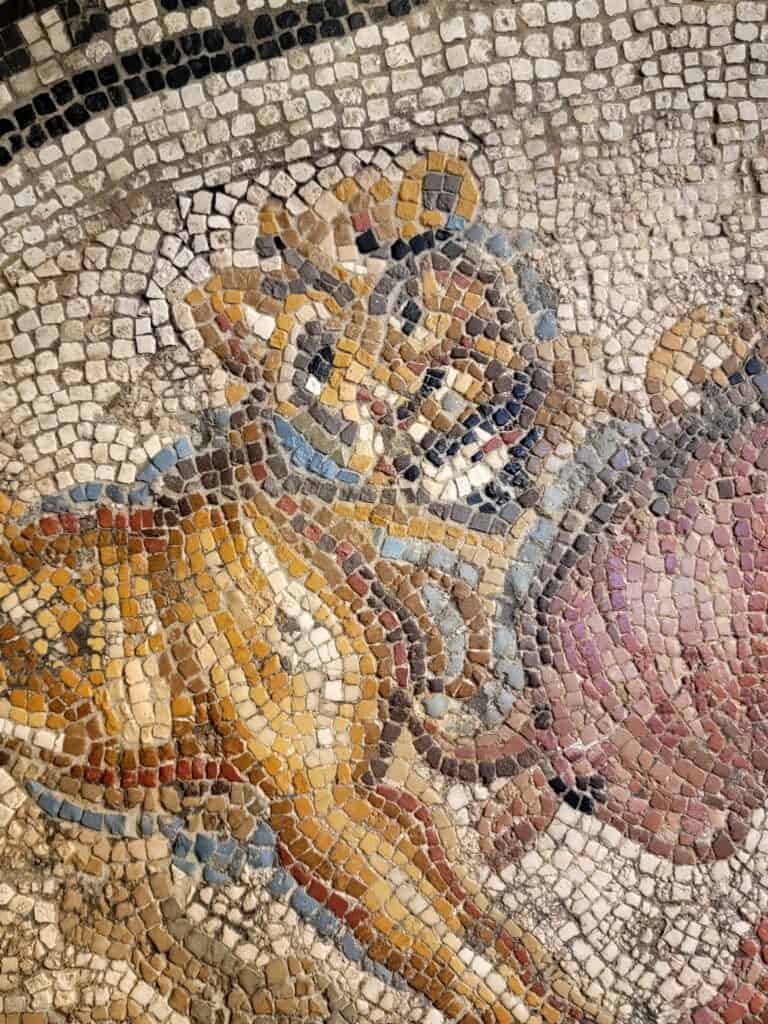
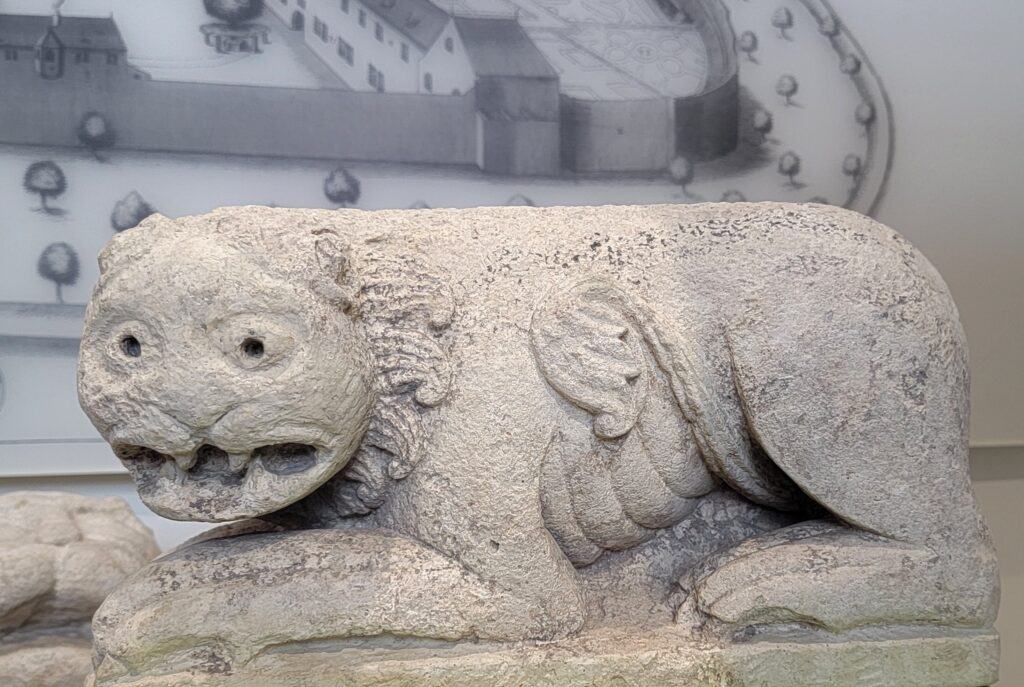
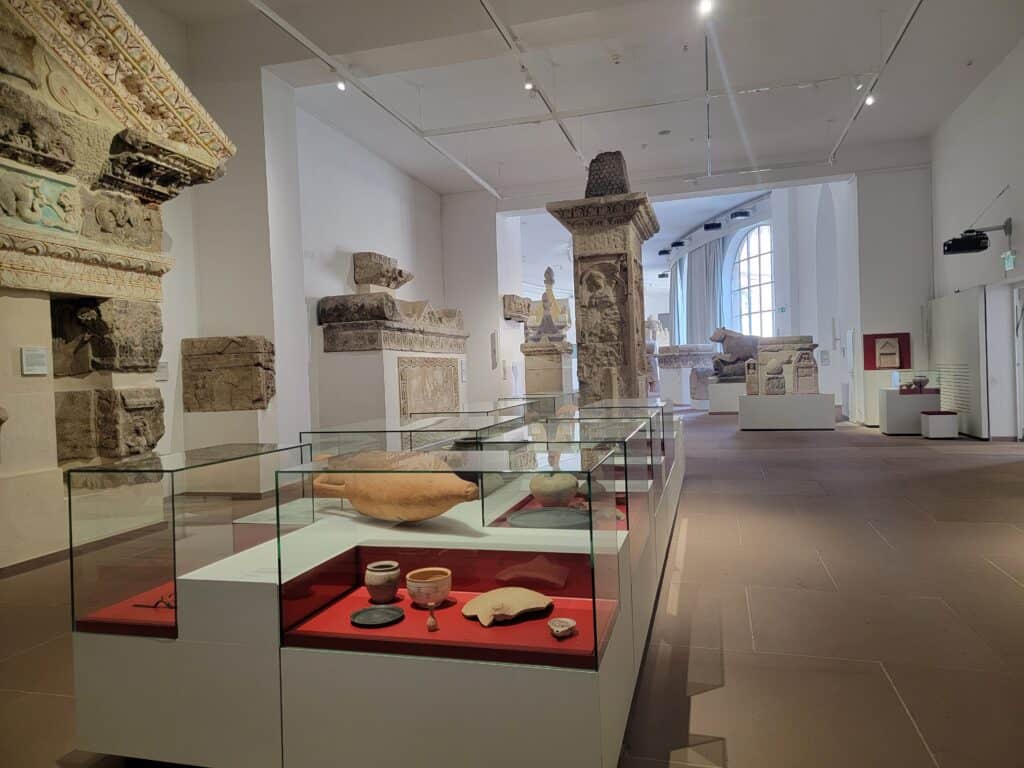
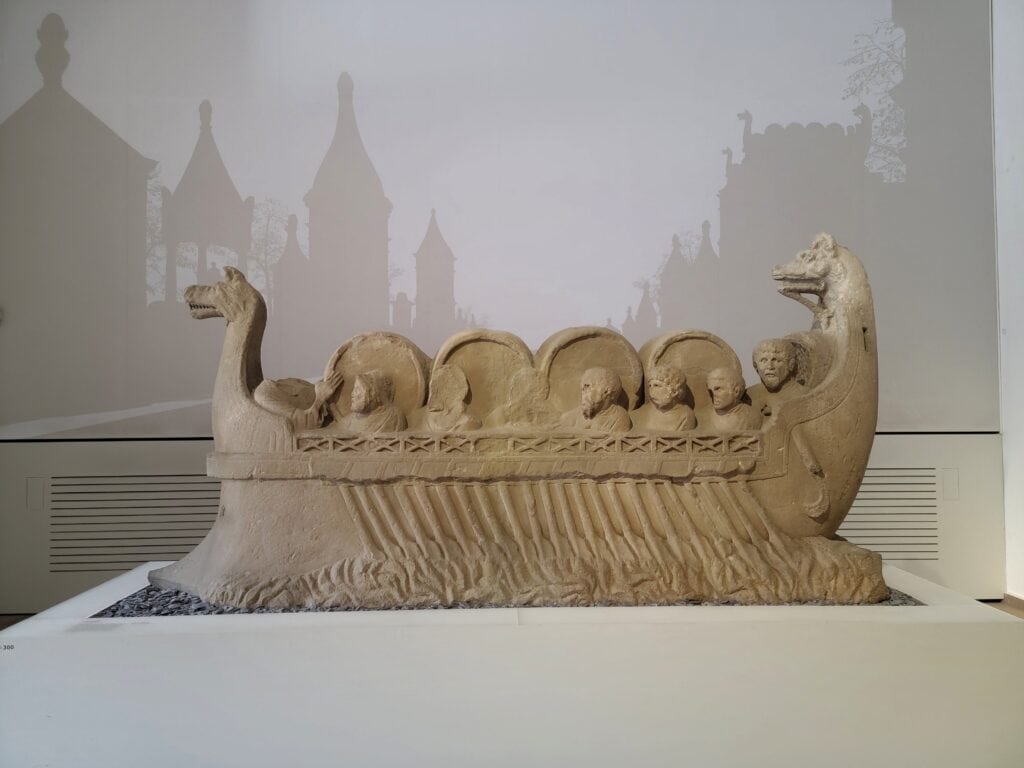
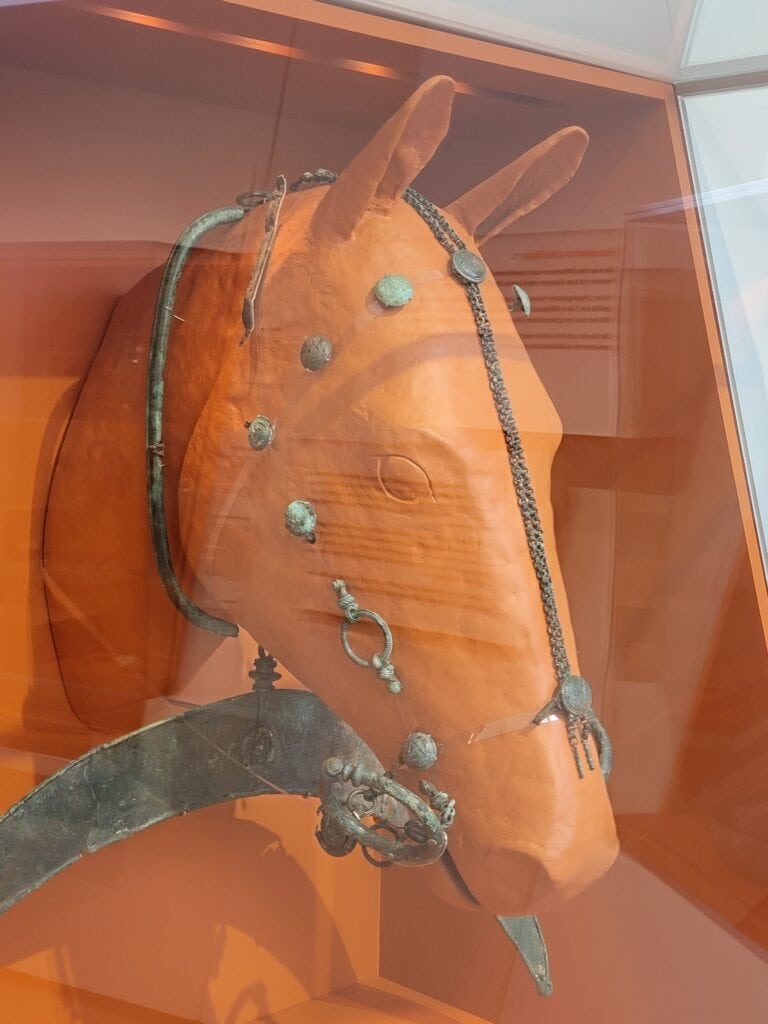
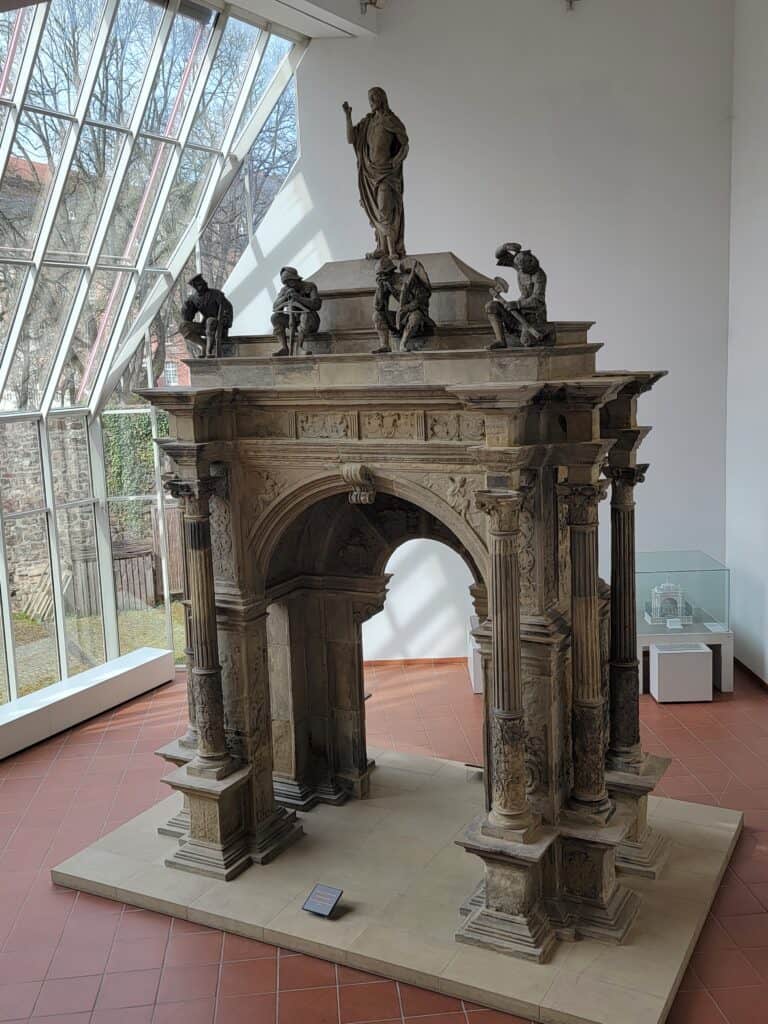
6) Kaiserthermen
What’s an important ancient Roman city without a huge bath complex, right? Sounded like a good plan at the time, but sadly the Kaiserthermen was never completed. Little did the laborers of ancient Rome know that they were basically building an archaeological park for the people of the future! The core remains but the outer areas were all victims of those darn Medieval stone pillagers who swiped the ready-made blocks for new building projects.
Nevertheless, it’s a very cool complex both figuratively and literally! When I took these pictures it was 98 degrees F and the sun was blazing. It was blissful to escape the heat, and poke around the cool stone passages and underground tunnels of this ancient place.
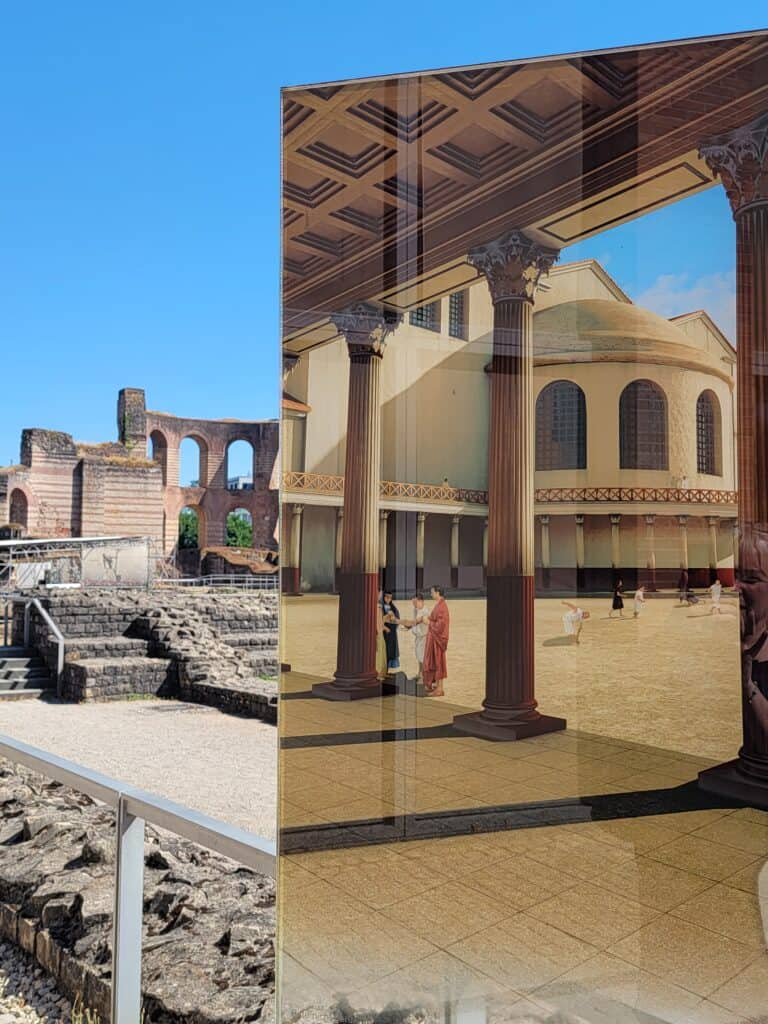
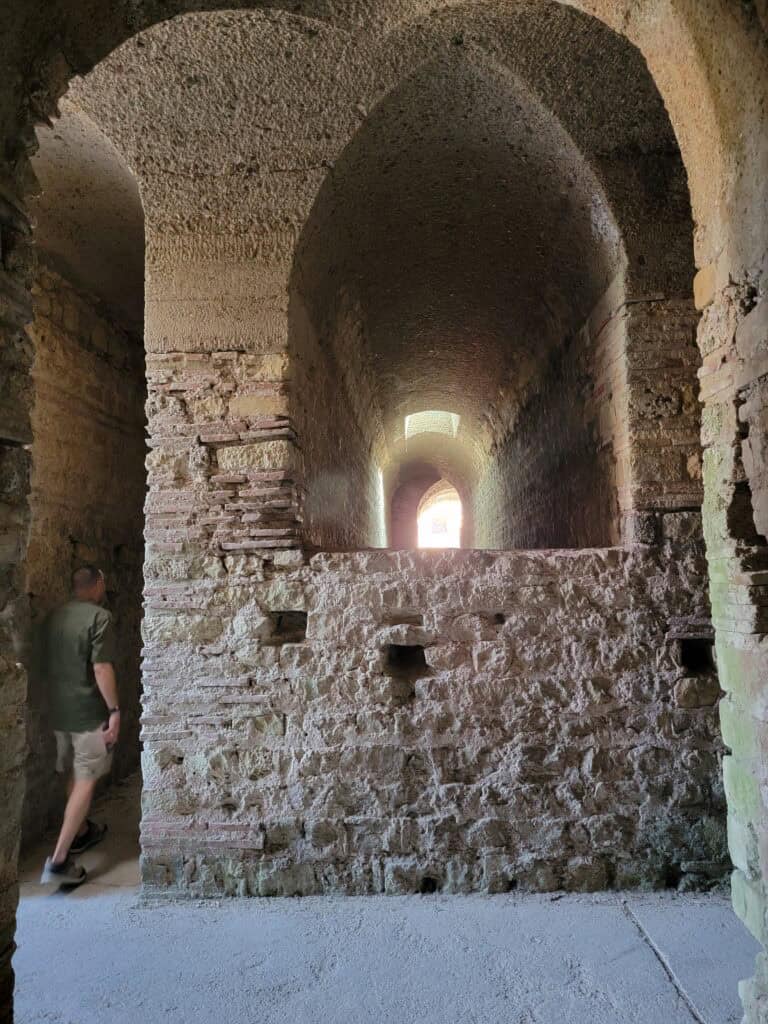
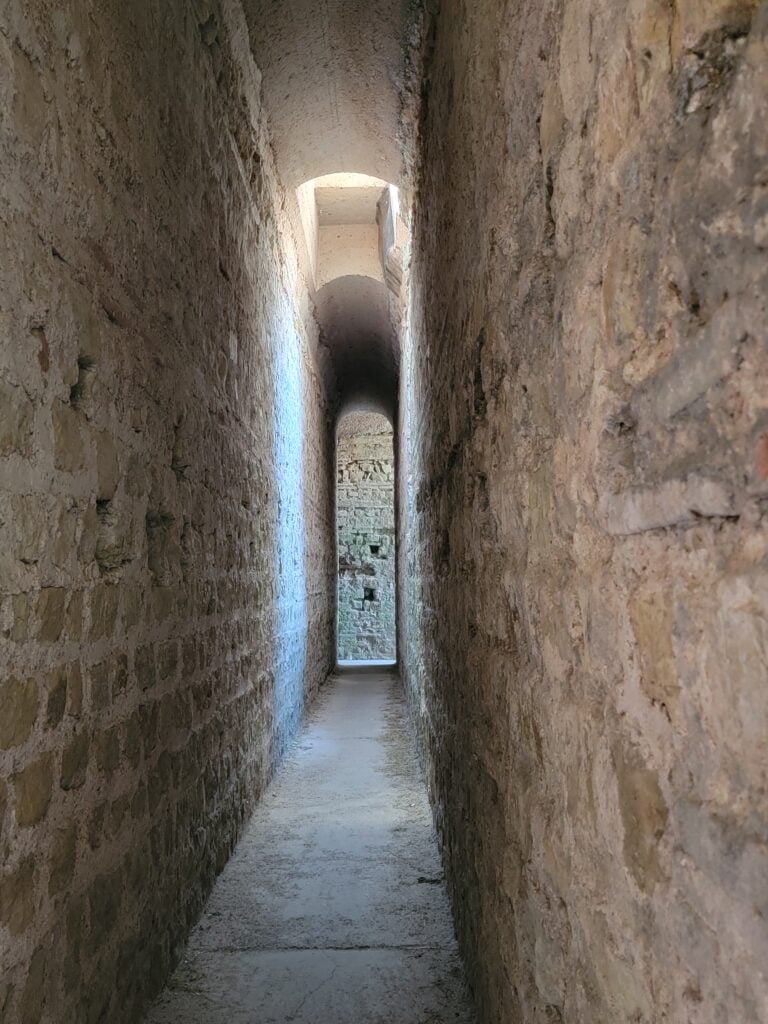
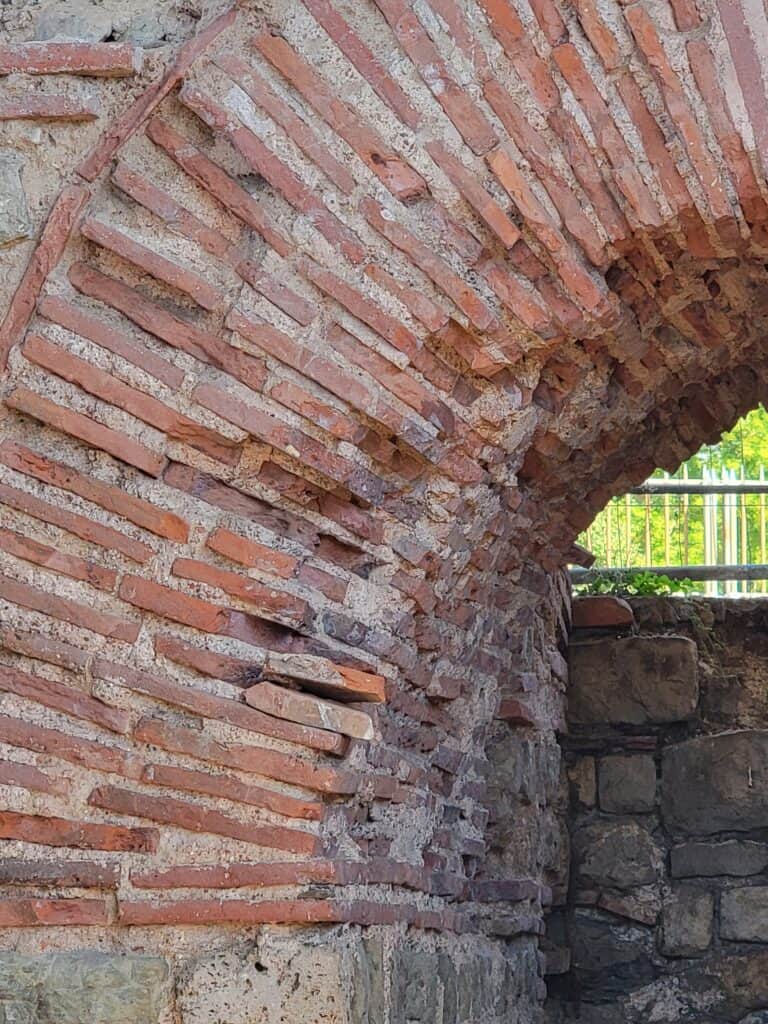
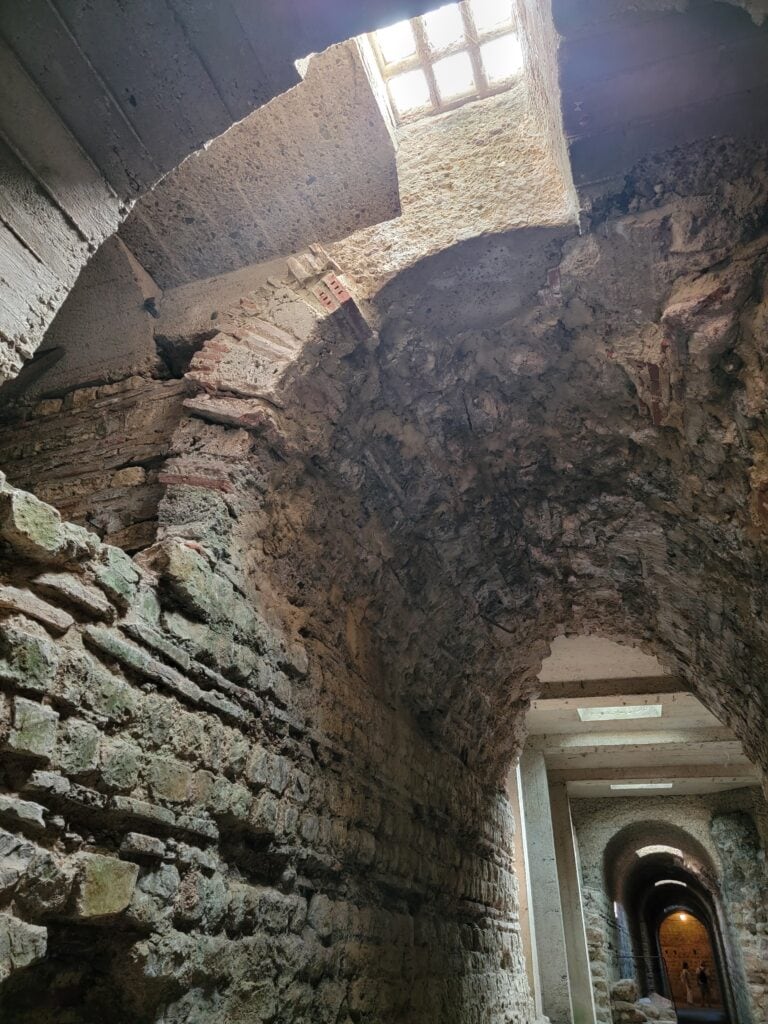
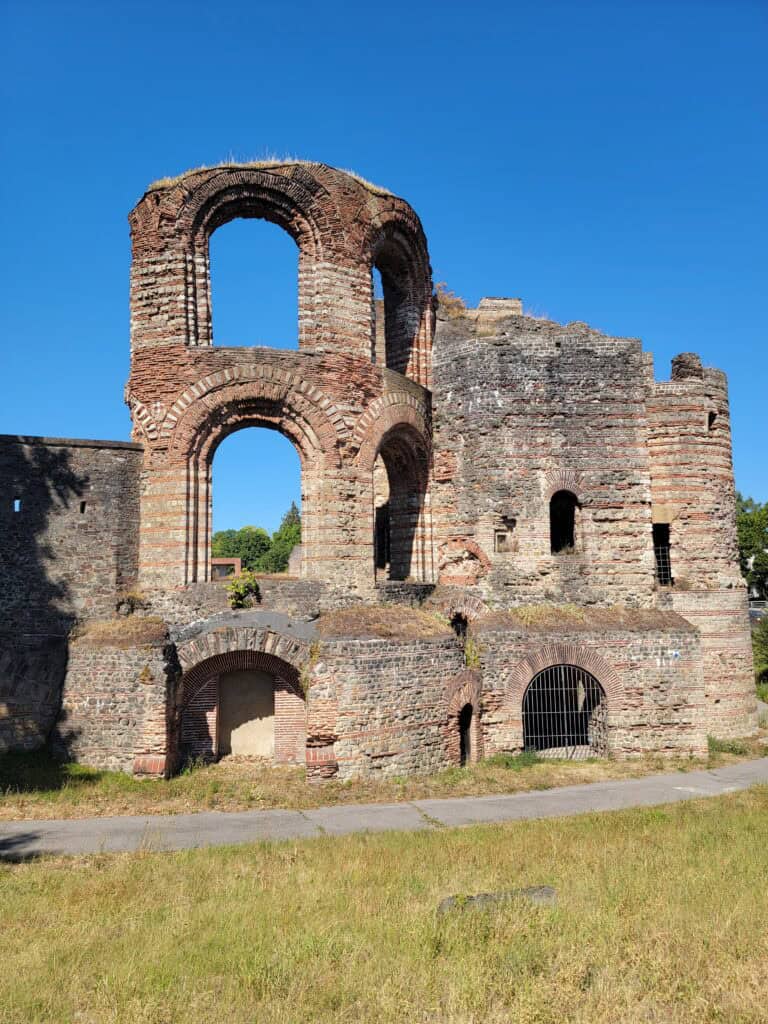
An adult ticket will cost you €4. Check for full pricing, hours of operation, and guided tour opportunities at the official Kaiserthermen website.
And if you haven’t gotten enough of ancient baths, check out:
7) Barbarathermen
This bath complex was even bigger than Kaiserthermen! Unfortunately, construction ended in the 4th century when Trier was sacked and destroyed by Barbarian hoards including the… wait for it… Vandals.
Later, Emporer Maximillian decided it would be fun to use the remaining walls for canon practice. So the poor Barbarathermen is not as exciting to see, but after major restoration it reopened to the public in 2015. You can access it free of charge from a footbridge at the end of Friedrich Wilhelm Straße. Information placards at the site describe what you are seeing.
Sponsored content: This section contains affiliate links
8) The Basilica of Constantine

The Basilica of Constantine in Trier, Germany, also known as the Aula Palatina, is a stunning example of Roman imperial architecture. Even so, you may find yourself walking past it thinking it’s a much more modern brick building! So don’t miss it!
It was actually built in the early 4th century as Emperor Constantine’s throne hall! It is the largest surviving single-room structure from antiquity anywhere in the world.
Its vast, simple brick walls and soaring ceiling are all the more incredible when you realize just how old the building really is.
Today, it serves as a Protestant church retaining all of its immense proportion and Roman grandeur.
It’s also a UNESCO World Heritage Site where you can really step into Trier’s past as a major Roman city, making it a must-visit in Germany’s oldest city!
9) Thermen am Viehmarkt
But wait, there’s more! Truly Romans had to be the cleanest people on earth! Yet ANOTHER Roman bath complex was discovered in 1987 on the former site of a cattle market which was being turned into an underground parking garage.
Construction came to a halt, the car park was redesigned, and you can now go see the excavation site under a giant glass cube-shaped building. The building often serves as a venue for events like “The Wine Forum” an annual event in January featuring wines from all over the Moselle Region of Germany. Tickets go fast so if you’re a wine connoisseur, plan well ahead of time!
10) The Amphitheater
The final must-see Roman ruin (until they find another giant bath complex) is the 10th largest surviving Roman amphitheater. It had a capacity, in its day, of 20,000 people! Underneath the stage was a cellar that survives. From the cellar, an elevator could bring people and animals up to the center of the stage. The amphitheater hosted everything from brutal gladiator fights, to important announcements, animal hunts, musical performances, dancing, juggling and other theatrical performances. It was the place to be! Not much is left, but you can imagine seating built into the hillsides, teeming with festivities.
It’s €4 for an adult ticket. For full pricing and information on gladiator tours, go to the amphitheater’s website.
10) Karl Marx House
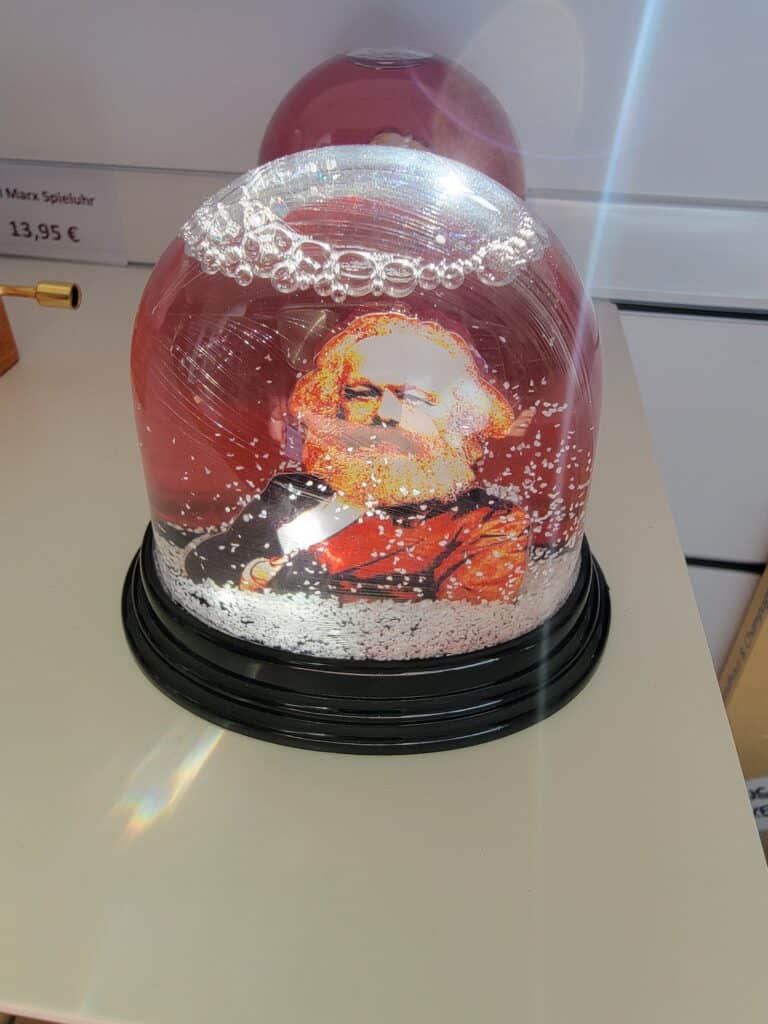
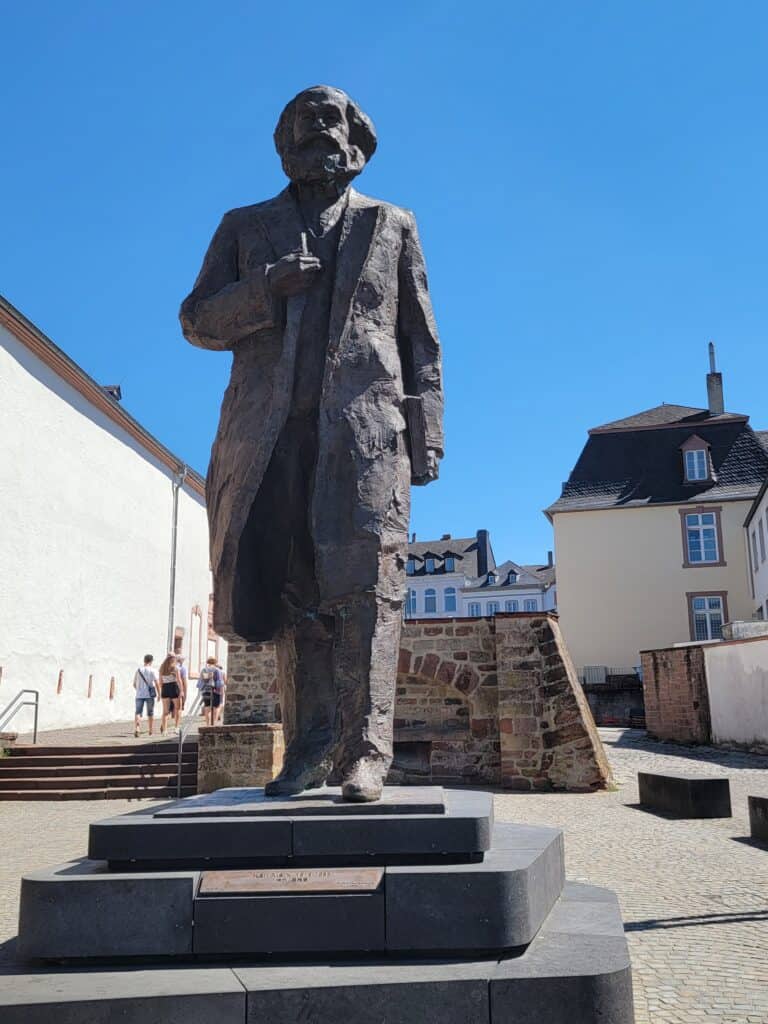
Yep, Trier is full of surprises. St. Simeon is not the only famous son of Trier – Karl Marx was born here, and you can visit his birthplace (built in 1727). It has been turned into a museum dedicated to his life as a writer, philosopher, and critic of capitalism and the social woes of the 19th century. The museum is text-rich and traces his life and writings beginning in Trier. There are themed tours and workshops available so check the Karl Marx House website for those, plus hours and times of operation.
It’s 5 euros for a ticket, but if you come between 1:00 and 1:30pm it’s free. You can find tons of kitschy Marx souvenirs all over Trier. There’s even a line of distilled spirits! I can tell you from personal experience, the Bourgeoisie Gin is pretty great!
Best Places to Eat in Trier Old Town
Much of ancient Trier can be seen by foot, so after walking all over town you’re going to need a break at some point. And lucky you, there are great places all over!
The old town center is absolutely charming with lots of restaurants, cafés, and ice cream spots. You can wander around looking at the old medieval buildings and soaking it in until something strikes your fancy. Or if you’re looking for suggestions:
Brasserie Zur Sim
For a restaurant with a cozy interior or a beautiful outdoor terrace, delicious food, good wine, and the million-dollar Instagrammable view of the Porta Nigra, check out the historic Brasserie ZUR SIM. You can’t go wrong here on a warm sunny day.
Zur Steipe
Dietrichstraße 54, 54290 Trier
Another great spot is ZUR STEIPE. I haven’t stopped thinking about their red beet /pear quiche with walnuts and gorgonzola for weeks! And if you’re looking for meatier fare, my son and dining partner who fancies himself a rahmschnitzel connoisseur (pork schnitzel with creamy mushroom sauce) has declared the one he had here “the best.”
I nabbed a couple of his fries too, and they were outstanding. We ate in the wintergarten which was lovely. In the summer there’s an outdoor café right on the main square of the old city.
Hans im Glück
If you’ve got a craving for a nice big burger, check out this excellent German chain which has a location right in the middle of Trier Old Town. There’s a good selection of pub fare, including vegan and veggie burger options, and their sweet potato fries were excellent!
They also serve up cocktails so it’s a nice spot with good atmosphere to rest and rejuvenate with some hearty fare.
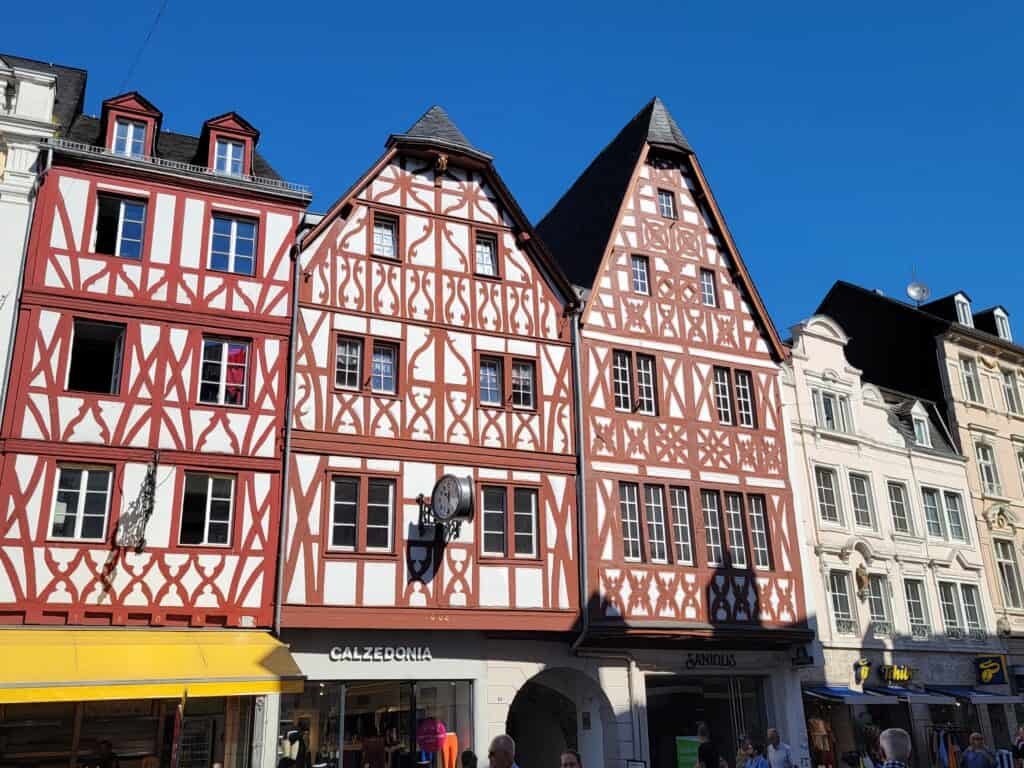
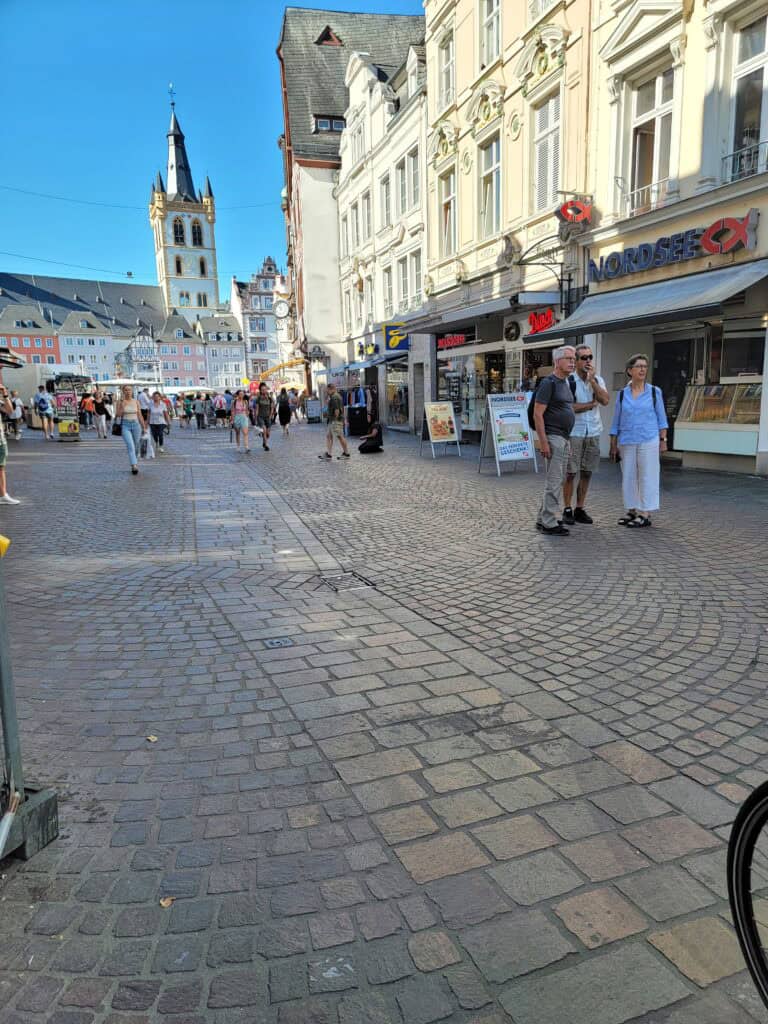
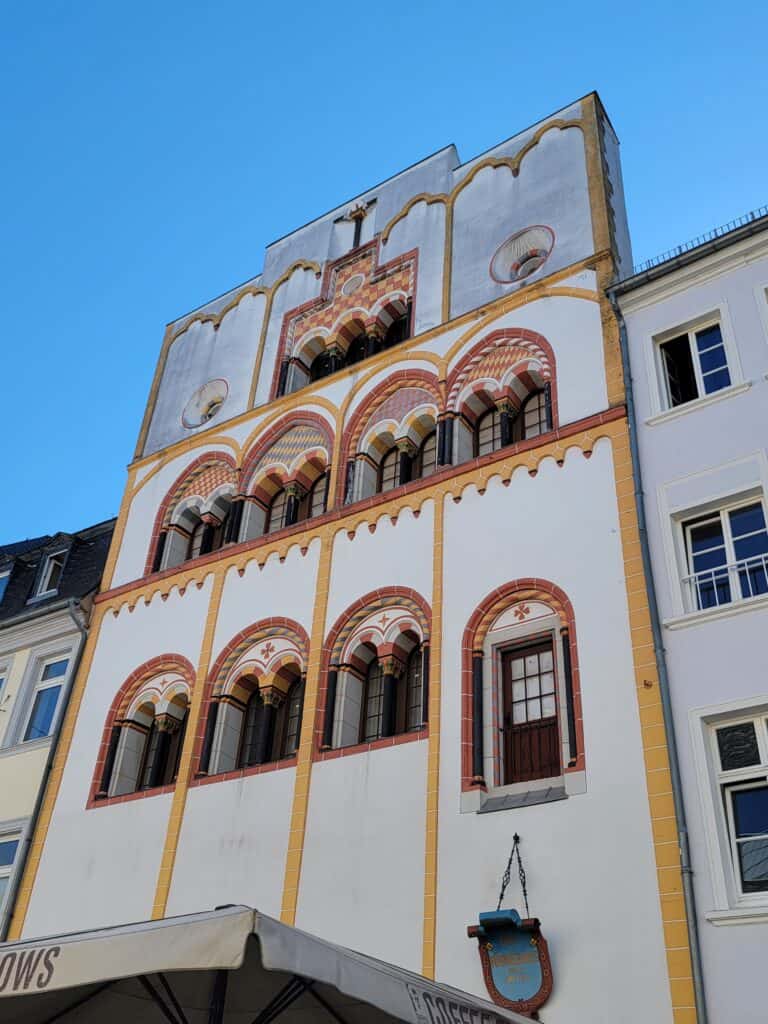
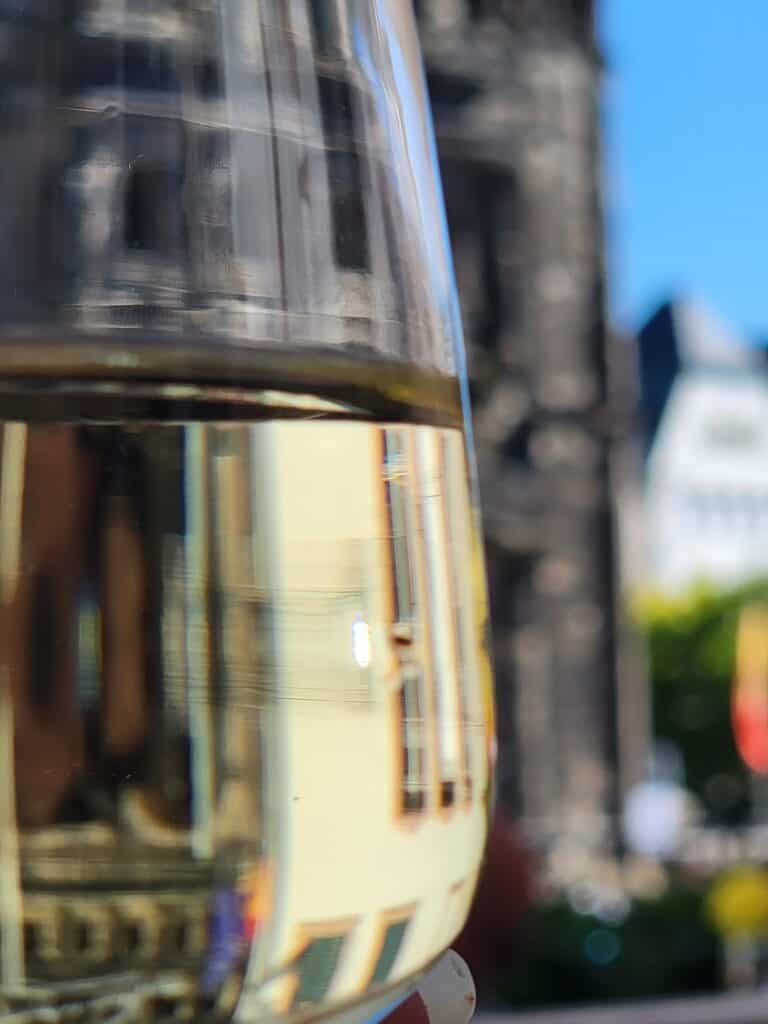
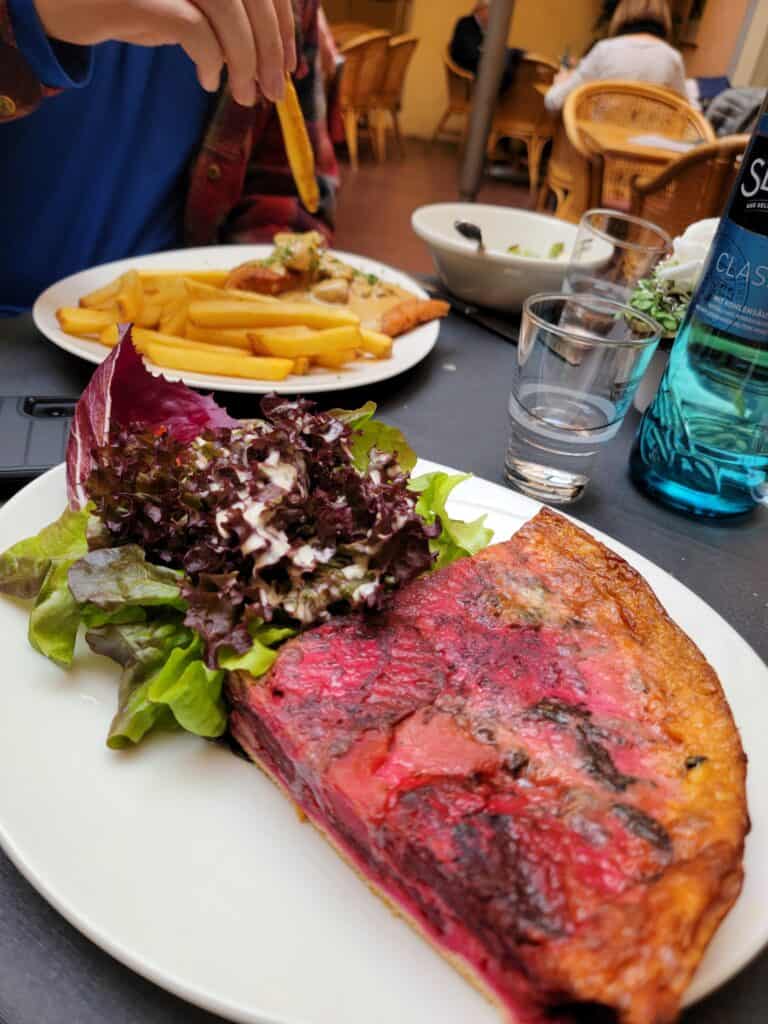
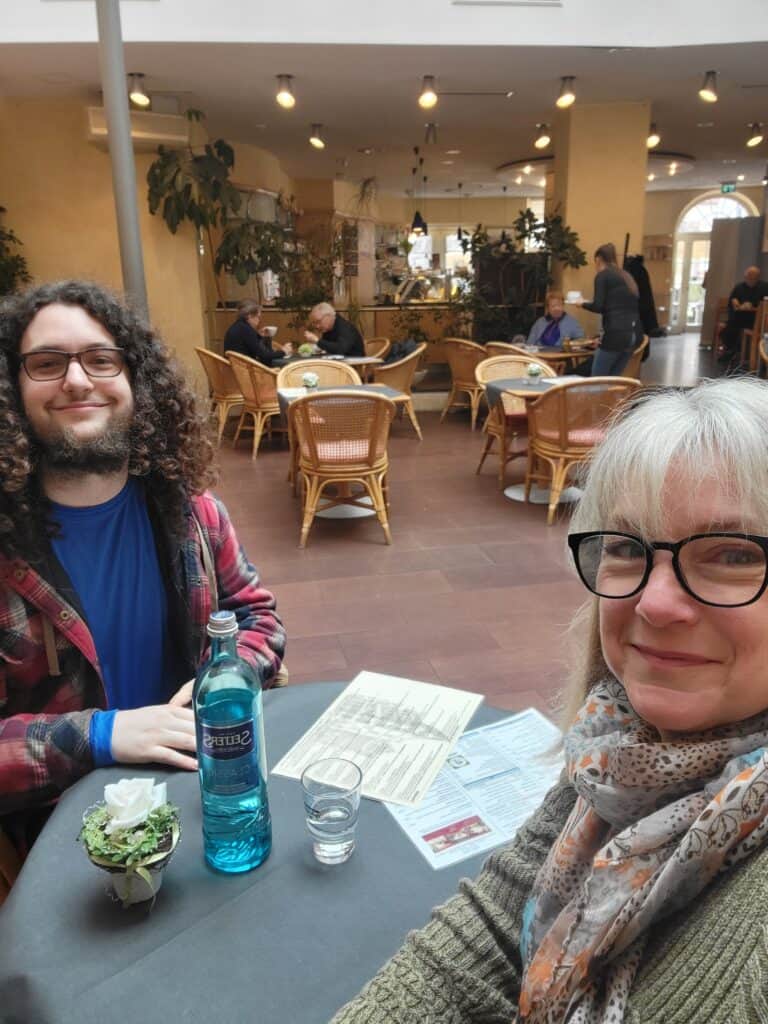
Is Trier Worth Visiting?
Hopefully I’ve made my case about why this hidden gem in Germany should be on your itinerary by showing you all the best things to do in Trier. It truly is a wonder that most people miss! Everything above will take you two days including a little time to do some happy unplanned wandering, and hitting a few shops. Don’t miss it, especially if your travels include the wine/castle region of Germany, Frankfurt, Luxembourg or Alsace in France, all of which are fairly close by.
How to Get to Trier
🚗 By Car
- From Frankfurt: 2 hours
- From Cologne (Köln): 1 hour 45 minutes
- From Heidelberg: 1 hour 45 minutes
- From Kaiserslautern: 1 hour 5 minutes
🚉 By Train
- From Frankfurt: About 3 hours 5 minutes
- From Cologne (Köln): About 2 hours 45 minutes
- From Heidelberg: About 3 hours 10 minutes
- From Kaiserslautern: About 2 hours
✈️ Closest Airports
Frankfurt (FRA), Luxembourg (LUX), Cologne/Bonn (CGN), Hahn (HHN)
Other Great Things in the Area:
- Trier Christmas Market – Germany’s Oldest City Shines
- Völklingen Ironworks – Comprehensive Guide for Visiting This Remarkable UNESCO Site
- Explore the Astounding Schlossberg Caves and Castle Ruins in Homburg
- Dinopark in Kaiserslautern: Great Fun for Everyone at the Gartenschau
- Ultimate Guide to Frankenstein Castle in Frankenstein Germany
- Hike to Hohenecker Castle in Kaiserslautern Germany
- Explore Fascinating Nanstein Castle in Landstuhl Germany
- Stahleck Castle in Bacharach: A Gorgeous Hike with a Dark Past
- Discover Charming Hohenbaden Castle Overlooking Baden-Baden
More City Guides to Hidden Gems in Europe:
- 46 Best Things to Do in Rothenburg ob der Tauber
- 25 Best Things to Do in Nuremberg: History and Hidden Gems
- One Day in Bamberg: Best Guide to Germany’s Medieval Beer Capital
- 21 Best Things to Do in Kaiserslautern Germany
- The Best 28 Day Trips from Kaiserslautern Germany: Your Ultimate Guide
- 11 Best Things to Do in Trier, Germany
- One Day in Aachen? Discover the Treasure!
- 11 Best Things to Do in Marburg, Germany’s Fairytale Town
- The Perfect Weekend in Cologne, Germany
- The 12 Best Things to Do in Epernay France
- 12 Incredible Things to See in Metz, France
- Ostuni the White City: Your Magical Gateway to Puglia
- The 7 Most Amazing Things to Do in Ravello Italy
- Is Pisa Worth Visiting? The Good and the Bad.
- Ravenna, Italy – Ultimate One-Day Itinerary!
- 20 Amazing Things to Do in Poznan, Poland!
- Altdorf Switzerland: Discover Where William Tell Shot the Legendary Apple
